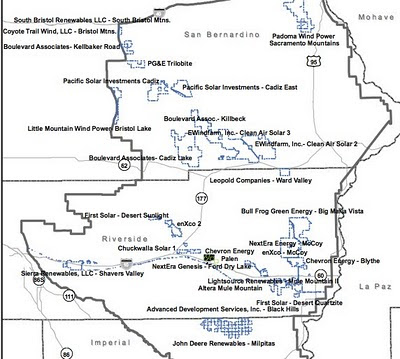Environmental Organizations Demand Wiser Desert Solar Policy
The editorial below was jointly authored by the Sierra Club, NRDC, and Wilderness Society in response to wayward government policy that could needlessly sacrifice hundreds of square miles of pristine desert to solar energy development. These groups are finally showing much needed leadership on a vexing issue -- that not all renewable energy is "green." I explore the issue in more depth in " Green vs. Greed ." The bottom line is that the Department of Interior is willing to permit solar energy development on desert habitat, even though millions of acres of already-disturbed lands are being ignored by our government and energy companies. Additionally, rooftop solar programs have not yet tapped the full potential of distributed generation in our cities. Our energy policy needs to break free from the old paradigm of massive transmission lines and facilities and take advantage of the true benefit of solar -- that it can be generated wherever the sun shines. Ther




